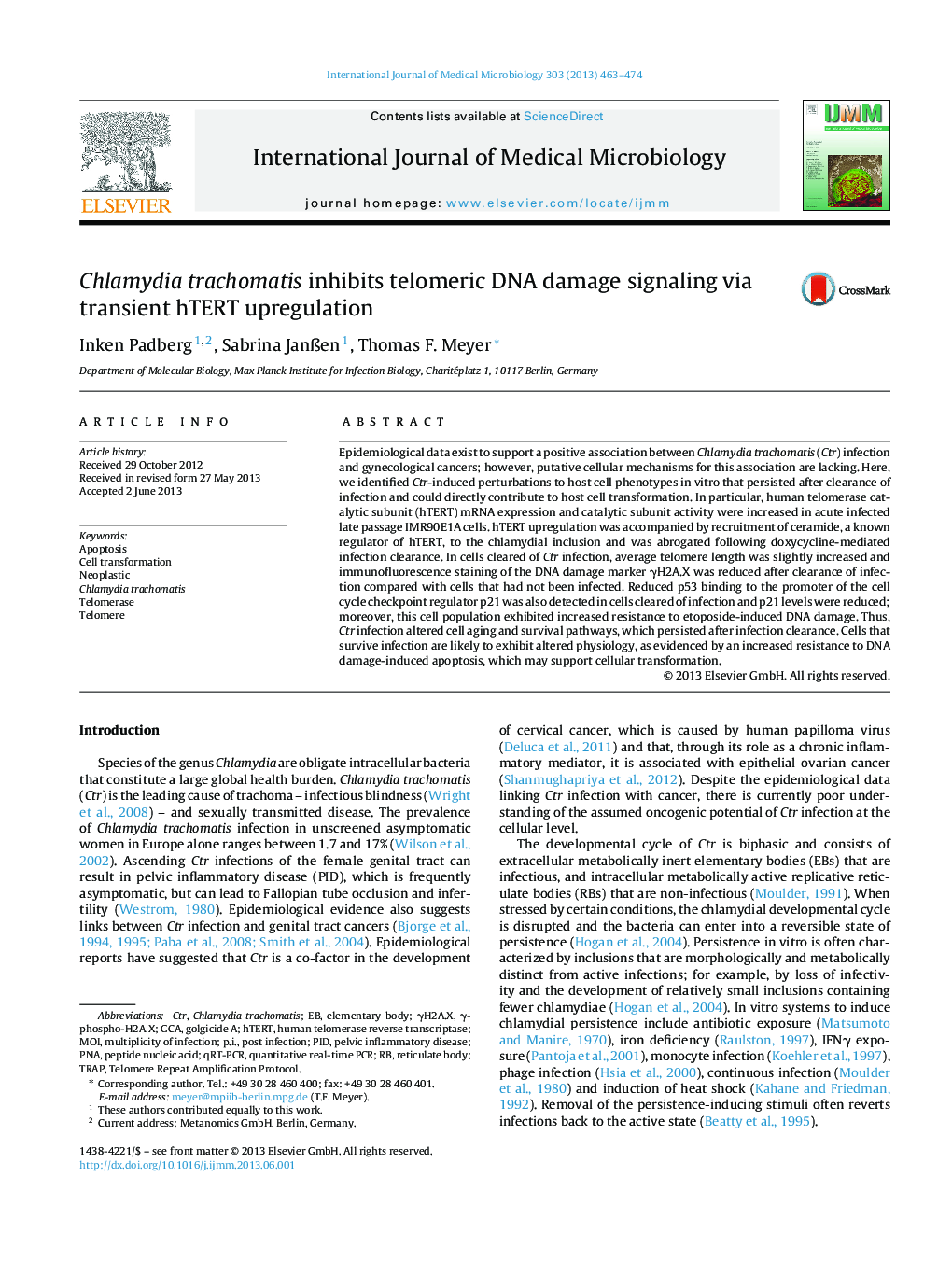| Article ID | Journal | Published Year | Pages | File Type |
|---|---|---|---|---|
| 8385809 | International Journal of Medical Microbiology | 2013 | 12 Pages |
Abstract
Epidemiological data exist to support a positive association between Chlamydia trachomatis (Ctr) infection and gynecological cancers; however, putative cellular mechanisms for this association are lacking. Here, we identified Ctr-induced perturbations to host cell phenotypes in vitro that persisted after clearance of infection and could directly contribute to host cell transformation. In particular, human telomerase catalytic subunit (hTERT) mRNA expression and catalytic subunit activity were increased in acute infected late passage IMR90E1A cells. hTERT upregulation was accompanied by recruitment of ceramide, a known regulator of hTERT, to the chlamydial inclusion and was abrogated following doxycycline-mediated infection clearance. In cells cleared of Ctr infection, average telomere length was slightly increased and immunofluorescence staining of the DNA damage marker γH2A.X was reduced after clearance of infection compared with cells that had not been infected. Reduced p53 binding to the promoter of the cell cycle checkpoint regulator p21 was also detected in cells cleared of infection and p21 levels were reduced; moreover, this cell population exhibited increased resistance to etoposide-induced DNA damage. Thus, Ctr infection altered cell aging and survival pathways, which persisted after infection clearance. Cells that survive infection are likely to exhibit altered physiology, as evidenced by an increased resistance to DNA damage-induced apoptosis, which may support cellular transformation.
Keywords
p.i.PIDTRAPCTRPNAGCAqRT-PCRhTERTMOIPeptide nucleic acidelementary bodyReticulate bodypelvic inflammatory diseaseCell transformationTelomeretelomere repeat amplification protocolTelomerasehuman telomerase reverse transcriptaseApoptosispost infectionneoplasticquantitative real-time PCRmultiplicity of infectionChlamydia trachomatis
Related Topics
Life Sciences
Biochemistry, Genetics and Molecular Biology
Biochemistry, Genetics and Molecular Biology (General)
Authors
Inken Padberg, Sabrina JanÃen, Thomas F. Meyer,
